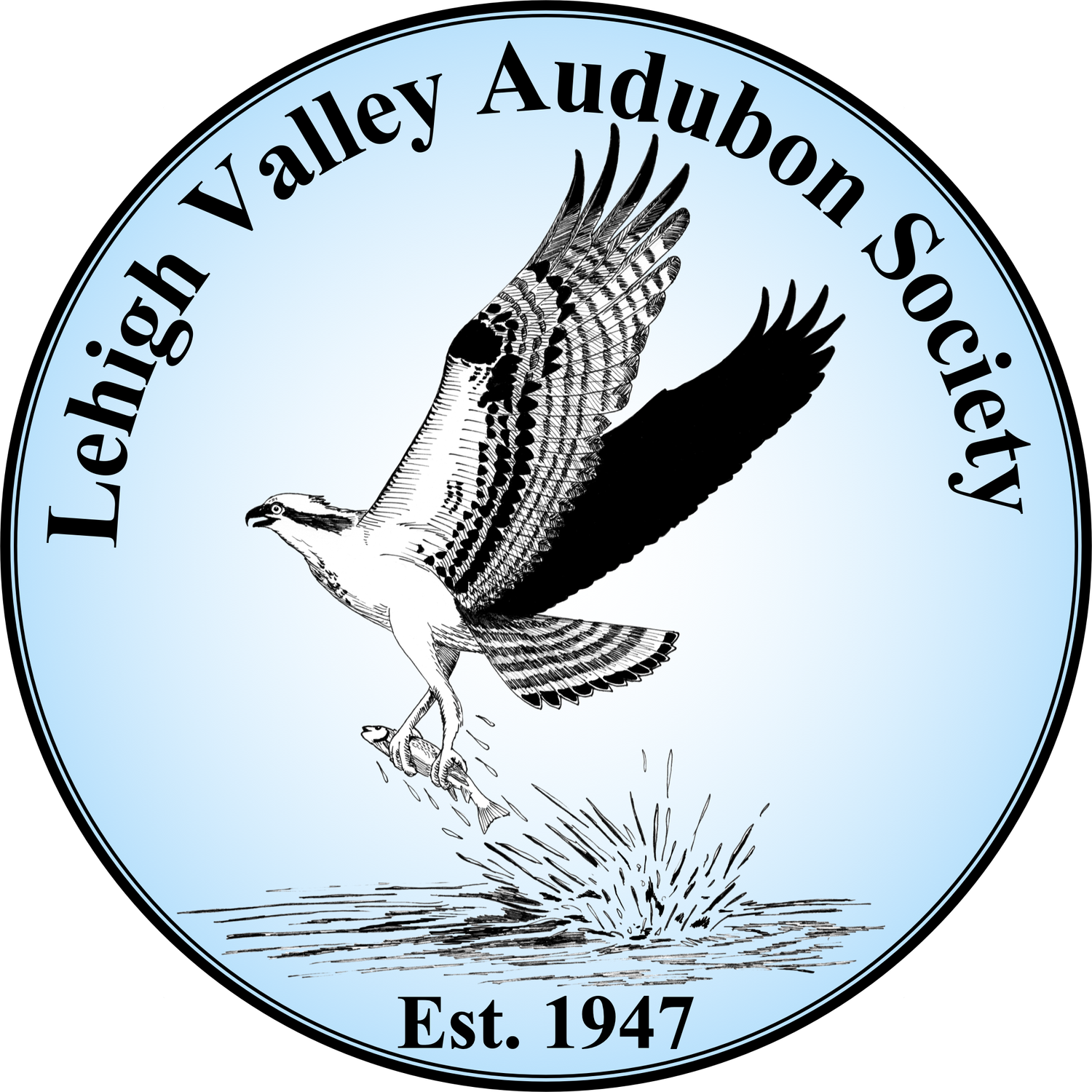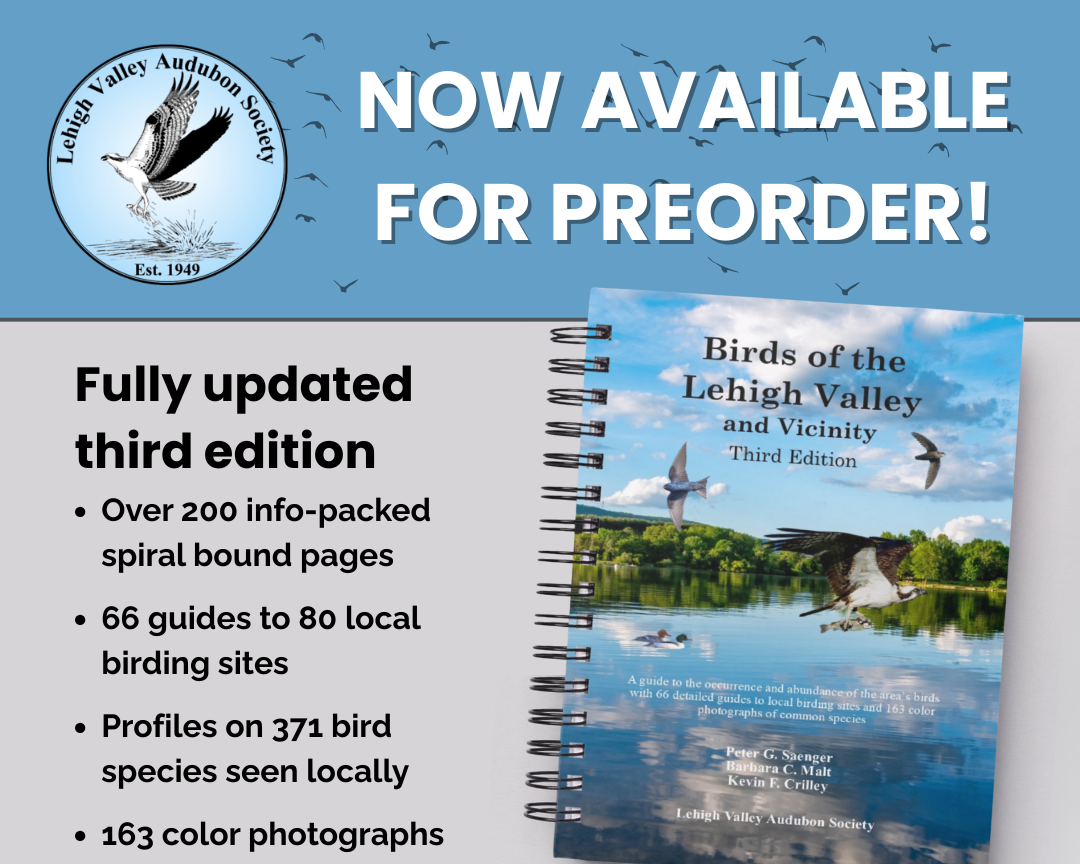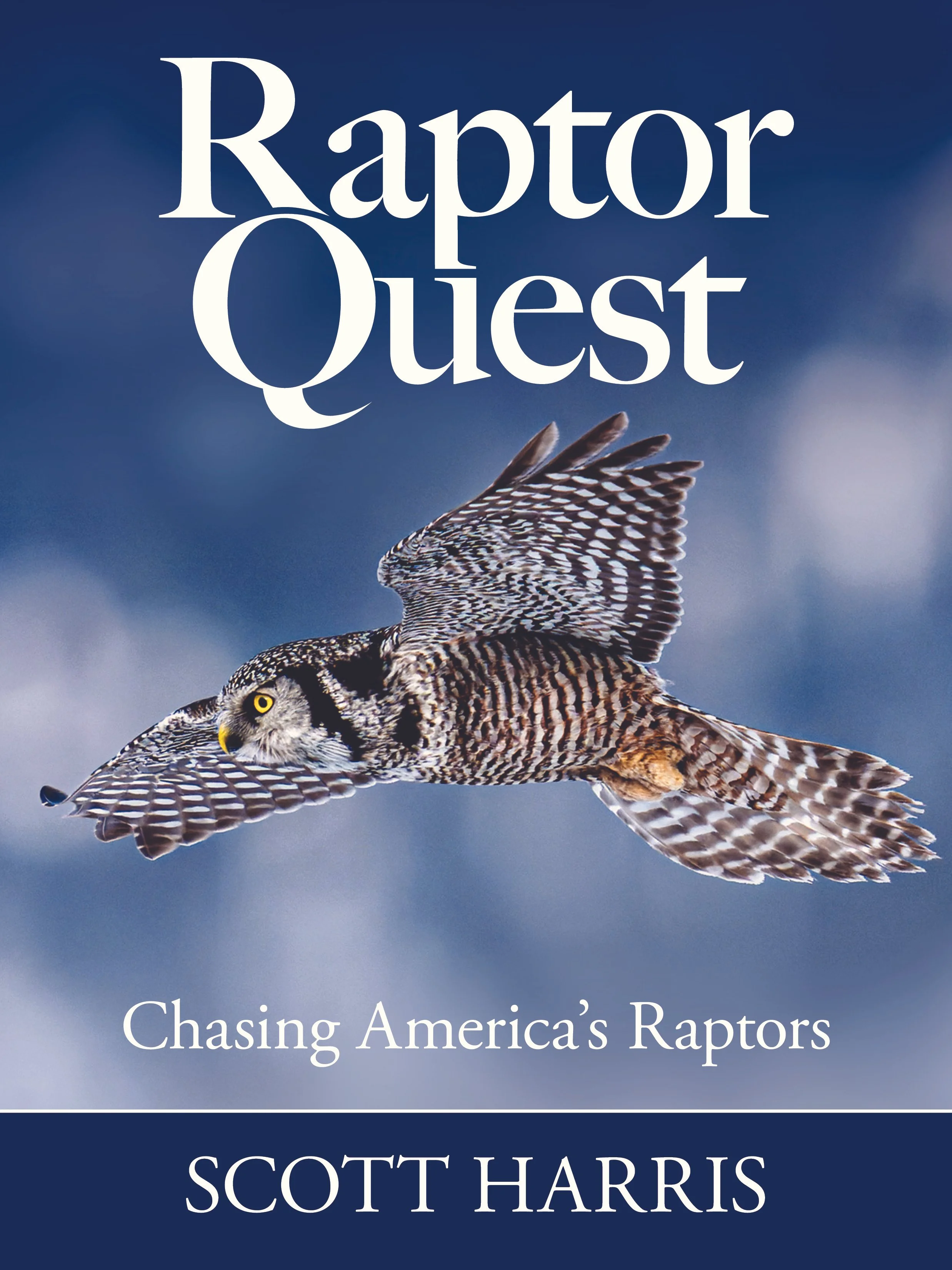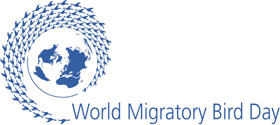- RBA
* Pennsylvania
* Lehigh / Northampton Counties and Vicinity
* May 16, 2014
* PAEA1405.16
- Birds mentioned
GRAY-CHEEKED THRUSH
AMERICAN BITTERN
ORANGE-CROWNED WARBLER
MOURNING WARBLER
OLIVE-SIDED FLYCATCHER
BLACK-CROWNED NIGHT-HERON
YELLOW-BREASTED CHAT
KIRTLAND’S WARBLER (probable)
PROTHONOTARY WARBLER
- Transcript
Hotline: Eastern PA Birdline
Date: May 16th at 5:00 AM
To Report by E-Mail: Send tobecard@rcn.com with “Birdline” in subject heading.
Compiler: Dave DeReamus
My reporting area includes all of Lehigh and Northampton Counties with the northern edge of the area reaching Beltzville State Park and the southern edge reaching Peace Valley Park in Bucks County. Updates are typically done every Friday, more often when necessary.
You can visit the Lehigh Valley Audubon Society Website at http://www.lvaudubon.org/ .
You can visit my 'Eastern PA Birding' Website for photos and information at http://users.rcn.com/becard/home.html .
There will be a field trip to Leaser Lake on May 17th Meet at the Tilghman Square parking lot, near the Red Robin restaurant, just west of Route 309 at 6:30 AM. Trip leader will be Fritz Brock.
There will also be a field trip to Penn Forest Township in Carbon County on May 18.th Meet at the Tilghman Square parking lot, near the Red Robin restaurant, just west of Route 309 at 6:30 AM. Trip leader will be Adam Smith.
Directions to many of the sites in this report can be found in the area’s birding guidebook, “Birds of the Lehigh Valley and Vicinity”. A completely revised, 2nd edition of the book can be ordered at: http://www.lvaudubon.org/shop/ .
NOW FOR THE BIRDS!
Sightings from UPPER MOUNT BETHEL TOWNSHIP, Northampton County:
Along National Park Drive:
20 warbler species.
Along Fox Gap Road:
GRAY-CHEEKED THRUSH – 1 on 5/10.
Along School Road:
AMERICAN BITTERN – 1 on 5/10.
Also Common Nighthawk.
Sightings from LAKE MINSI, Northampton County:
Red-breasted Merganser – 1 on 5/10.
Sightings from BEAR SWAMP, Northampton County:
ORANGE-CROWNED WARBLER – 1 on 5/9
MOURNING WARBLER – 1 on 5/10.
Sightings from PLAINFIELD TOWNSHIP RECREATION TRAIL, Northampton County:
21 warbler species.
Sightings from LOWER NAZARETH TOWNSHIP, Northampton County:
At a flooded field along Route 191 north of Route 946:
Bonaparte’s Gull – 1 on 5/10
Wilson’s Snipe – 1 on 5/10
Dunlin – 1 on 5/9.
Sightings from the GREEN POND area, Northampton County:
White-rumped Sandpiper – 1 on 5/14.
Also Greater and Lesser Yellowlegs, and Solitary, Spotted, and Least Sandpiper.
Sightings from the BETHLEHEM area, Northampton County:
Peregrine Falcons – 2 during this past week.
Sightings from MOORE TOWNSHIP, Northampton County:
American Pipits – 26 on 5/10 (along Schlegel Road).
Sightings from BELTZVILLE STATE PARK, Carbon County:
OLIVE-SIDED FLYCATCHER – 1 on 5/9.
Sightings from LEASER LAKE, Lehigh County:
Red-breasted Merganser – 1 on 5/12
BLACK-CROWNED NIGHT-HERON – 1 on 5/10
YELLOW-BREASTED CHAT – 1 on 5/11.
Also Horned Grebe, Black-billed and Yellow-billed Cuckoo, and 21 additional warbler species.
Sightings from the HAAFSVILLE area, Lehigh County:
Semipalmated Plover, Greater and Lesser Yellowlegs, and Solitary and Least Sandpiper.
Sightings from the JORDAN CREEK PARKWAY, Lehigh County:
KIRTLAND’S WARBLER – 1 on 5/10 (probable; heard only).
Unfortunately, the bird was never positively verified.
Sightings from WALKING PURCHASE PARK, Lehigh County:
15 warbler species.
Sightings from PEACE VALLEY PARK, Bucks County:
Ruddy Duck – 1 to 5/10
Double-crested Cormorants - 93 on 5/9
PROTHONOTARY WARBLER – 2 seen during this past week.
Also Yellow-billed Cuckoo, Common Nighthawk, Eastern Wood Pewee, Winter Wren, Cerulean Warbler, and 23 additional warbler species.
Cliff and Bank Swallow, Swainson's Thrush, Orchard Oriole, and many other arrivals were reported from several sites this past week.
- End transcript














